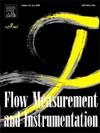Development of a novel Hybrid Hydrodynamic Particle Simulation Methodology for Estimating Discharge Coefficient of Broad-Crested Weirs
IF 2.3
3区 工程技术
Q2 ENGINEERING, MECHANICAL
引用次数: 0
Abstract
Weirs are crucial for flow measurement and water level regulation, with the discharge coefficient (Cd) influenced by factors such as crest length, height, upstream head, and slope. This study optimizes Cd estimation for broad-crested weirs using hybrid hydrodynamic particle simulation and physics-enhanced machine learning models. It investigates the impact of geometric parameters, crest length, weir height, slope angles on Cd by conducting 432 simulations. The primary outcome is the development of multi-variable regression equations to predict Cd, along with detailed water level and velocity profile analyses. Three advanced models: Physics-Enhanced Machine Learning (PEML), Physics-Regularized Regression Trees (PRRT), and Hybrid Hydrodynamic Particle Simulation (HHPS) are evaluated. The HHPS model outperforms others with DC of 0.998 and 0.996, RMSE of 0.013 and 0.017, WI of 0.999 and 0.998, and NSE of 0.998 and 0.997 for training and testing dataset, respectively, showing exceptional predictive accuracy. A sensitivity analysis using SHapley Additive exPlanations (SHAP) was used in this study. Upstream head-to-weir height ratio (H1/P) and flow rate (Q) with SHAP values of +0.15 and +0.11, respectively, have the greatest impact on Cd modeling. Also, this study enhances the understanding of weir flow dynamics and provides practical tools for engineers and hydrologists. By integrating physics-based simulations with machine learning, it sets a new precision benchmark for hydraulic structure design and analysis, impacting water resource management and environmental engineering.
求助全文
约1分钟内获得全文
求助全文
来源期刊

Flow Measurement and Instrumentation
工程技术-工程:机械
CiteScore
4.30
自引率
13.60%
发文量
123
审稿时长
6 months
期刊介绍:
Flow Measurement and Instrumentation is dedicated to disseminating the latest research results on all aspects of flow measurement, in both closed conduits and open channels. The design of flow measurement systems involves a wide variety of multidisciplinary activities including modelling the flow sensor, the fluid flow and the sensor/fluid interactions through the use of computation techniques; the development of advanced transducer systems and their associated signal processing and the laboratory and field assessment of the overall system under ideal and disturbed conditions.
FMI is the essential forum for critical information exchange, and contributions are particularly encouraged in the following areas of interest:
Modelling: the application of mathematical and computational modelling to the interaction of fluid dynamics with flowmeters, including flowmeter behaviour, improved flowmeter design and installation problems. Application of CAD/CAE techniques to flowmeter modelling are eligible.
Design and development: the detailed design of the flowmeter head and/or signal processing aspects of novel flowmeters. Emphasis is given to papers identifying new sensor configurations, multisensor flow measurement systems, non-intrusive flow metering techniques and the application of microelectronic techniques in smart or intelligent systems.
Calibration techniques: including descriptions of new or existing calibration facilities and techniques, calibration data from different flowmeter types, and calibration intercomparison data from different laboratories.
Installation effect data: dealing with the effects of non-ideal flow conditions on flowmeters. Papers combining a theoretical understanding of flowmeter behaviour with experimental work are particularly welcome.
 求助内容:
求助内容: 应助结果提醒方式:
应助结果提醒方式:


